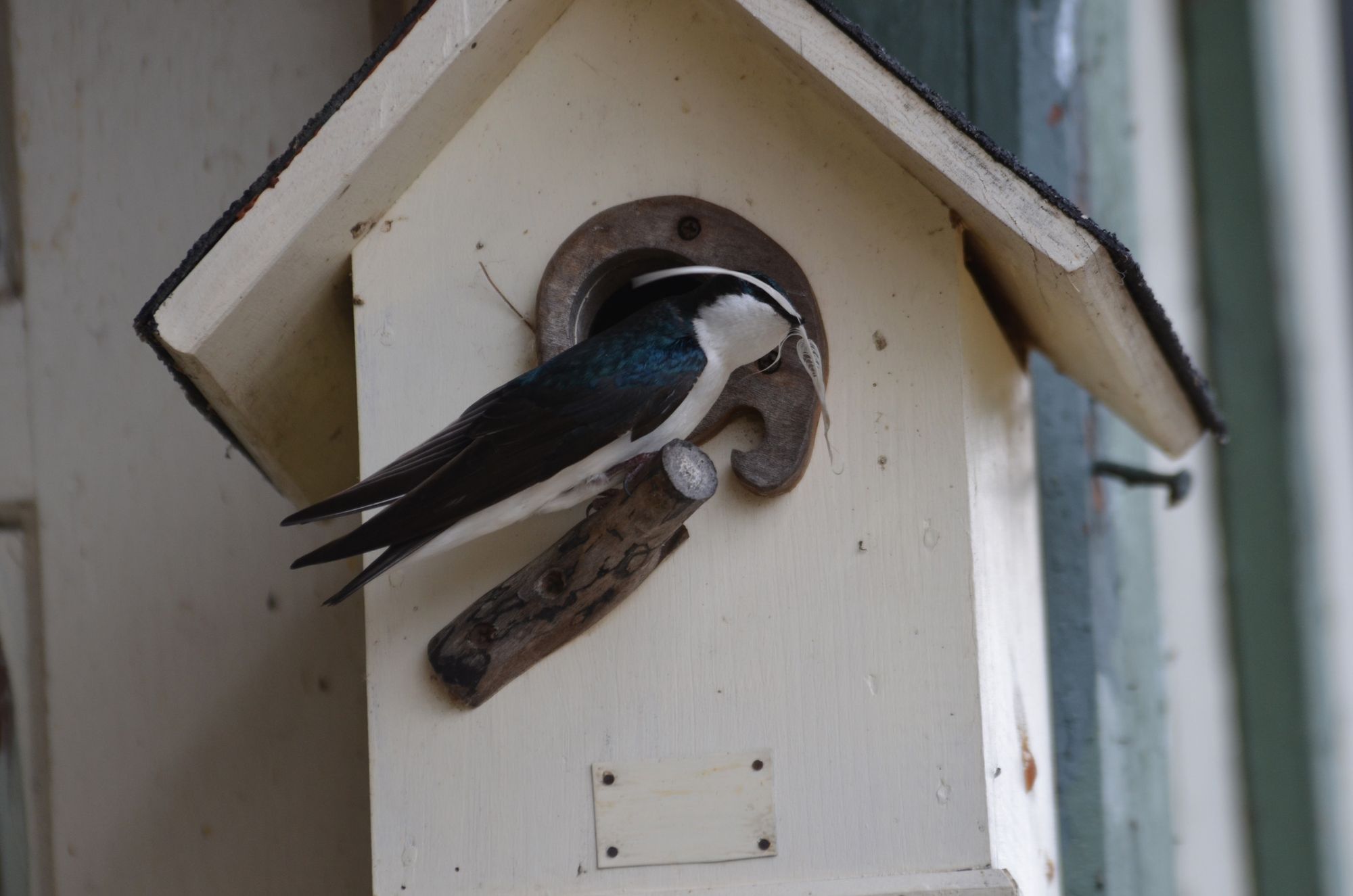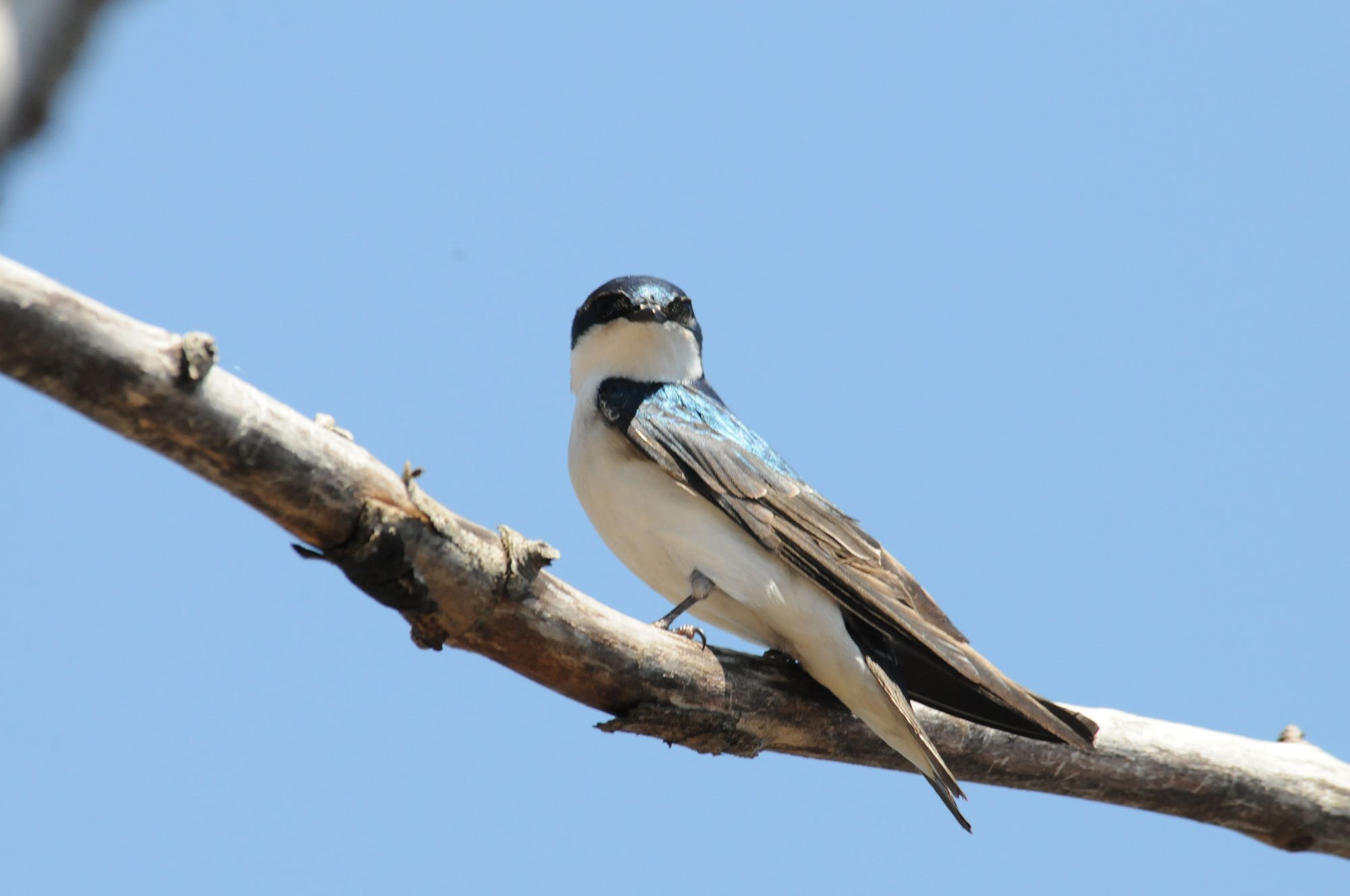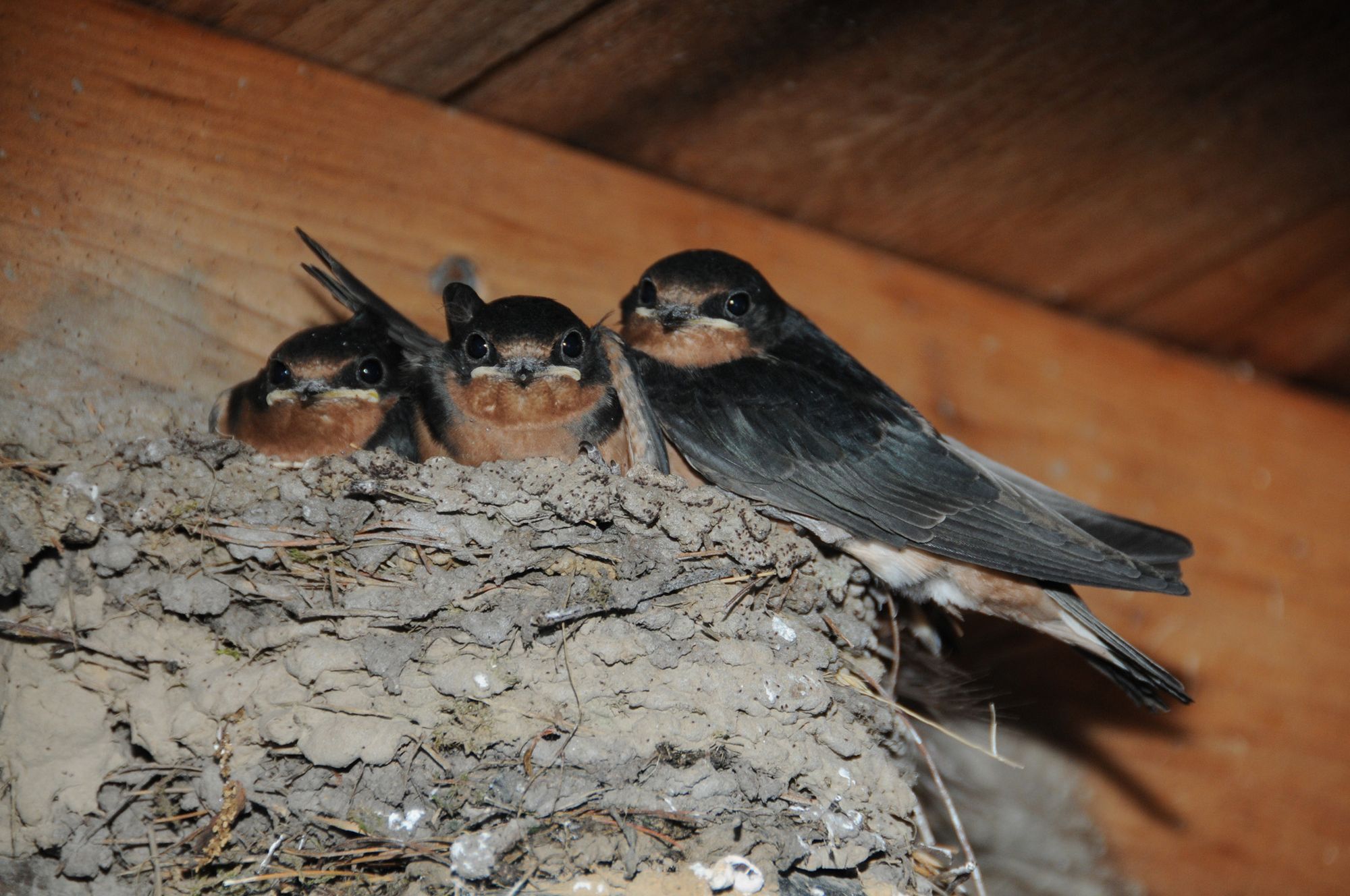Soon the Barn Swallows, which nest in waterside boat houses, under bridges and on farm buildings will be returning to the North Country. From conversations with many St. Lawrence River residents some will not welcome this news. Birds while performing necessary biological functions, within their human structure nesting sites tend not to be appreciated when the boat, car or other machinery is thus decorated. But such minor inconvenience is a small cost for having these insect vacuums hanging around the cottage or farm. Those humans that complain loudly are usually unaware of the value of these interesting birds.

Our region is home to six species of swallows during parts of the period mid-April to October. The well-known and usually much appreciated Purple Martin, the Barn Swallow and the Tree Swallow are generally fairly well known to area residents. The medium sized Northern Rough-winged and Cliff Swallows along with the diminutive Bank Swallow round out the clan. All are primarily catchers of insects on the wing and are known to birders as aerial insectivores. A wide variety of flying insects are consumed by these birds, and all but the Tree Swallow will starve if such fare is unavailable.
The largest species, the Purple Martin, has long benefited from great human press agents. This species has abandoned its natural nesting habitat over the last two centuries and now is dependent on human-provided “Martin Houses” and some other structures. As early as the mid-nineteenth century, many country inns had structures for Purple Martin adorning their entrances. Travelers viewed these structures as a sign that the establishment was of high quality. Unfortunately this species has declined catastrophically in my half-century of birding. A significant factor is the large kills of wintering flocks over rice farms in Brazil. These result from inappropriate application of Organophosphate pesticides. Such atrocities also killed human farm workers and possibly millions of birds. It appears that this species has never recovered from these events and remains under pressure from other, less dramatic, causes of decline.

The swallow-tailed Barn Swallow has been one of the most familiar birds to residents of rural North America. Nesting on cliffs and rock ledges prior to European arrival, this species adapted to our structures with great enthusiasm. I know of only one natural nesting site of theirs in our region, on the shale cliffs of Onondaga Audubon’s Richard A Noyes Sanctuary along the south shore of Lake Ontario.
Now happily nesting under bridges, in barns and boat houses this Bar Swallow prospered through the twentieth century. In the last two decades, alarm bells of decline have gone off. The province of Ontario has indicated concern for this Swallow, as well as Bank Swallow and Purple Martin. While New York has not yet officially expressed similar concern my experience indicates all three species are in decline. Why the Barn Swallow is undergoing decline is unclear. So, be kind to your temporary summer guests in the boathouse as they need our help.
The squarish-tailed Cliff Swallow also forms colonies on structures. Instead of open cup nests inside buildings they build mud gourds on the outside of structures. In addition to rural areas often colonies will develop on masonry walls of stores in suburban or even urban areas. Unfortunately these nests are sometimes considered a “nuisance" and hosed from structures. Such action is illegal, as well as stupid, under laws of both Canada and the United States. Better for one to put up with the birds presence, usually May through July, then to get a summons. In the past, these birds were often driven from park bathhouses and similar buildings by overzealous maintenance staff. Fortunately as better trained and more aware supervisory staff has developed this problem has generally been eliminated.
Our smallest swallow, the Bank Swallow, nests in eroding banks and other soil structures. They dig-out tiny burrows, each occupied by one pair, as they form colonies of variable size. One of the largest in our region has more than 3000 burrows in the eroding soil cliffs of the St.Lawrence River near the Iroquois dam. Given the unstable nature of their breeding habitat this species often suffers catastrophic losses of nests as substrates collapse. In recent decades they have taken to forming colonies in salt/sand piles at highway garages, a chancy choice at best. Changes in availability of breeding sites is clearly contributing to the documented decline of this species. In the 1980s I frequently observed thousands of this early southbound migrant near Derby Hill Bird Observatory during the first three weeks of July. Now high counts rarely top 100.
Our remaining two swallows, the Northern Rough-winged and Tree avoid the colonial nesting habits of their cousins. The former usually occurs as single pairs or a few pair nesting under bridges, on rock walls or on other hard surfaces. The latter breeds in tree cavities or human provided nest boxes. Both may be found as singles during the breeding season and never occur in large colonies. While most swallows are fairly easy to identify observers often confuse the brownish-backed Northern Rough-winged and Bank Swallows. Looking from below the breast of the former has only an indistinct brownish-Gray wash is visible, whereas the latter shows a distinct brown band on the upper breast.

While, like the previous four species, the Northern Rough-winged is a tropical winterer the Tree Swallow winters on the North American Continent. They are the earliest spring migrant swallow often appearing at our latitude by the third week of March. Able to shift from animal to vegetable food they can survive cold and wet spells of medium duration. Severe winters in the southeastern United States and or prolonged cold/wet spells during spring take a significant toll on this species. While their populations swing wildly, based on weather, Tree Swallow numbers seem not to be suffering the long- term overall declines of the four highly colonial species.
Given their requirements for flying insect food most of our swallows are early southbound migrants. Just as human snowbirds in the Islands are getting their summer into gear these avian snowbirds are checking out. Bank Swallows lead the way with most gone before July ends. As one sorts through the Swallow flocks on utility wires fewer and fewer Cliffs are present after early August. Purple Martin colonies suddenly become quiet with departures by mid-August. Northern Rough-winged Swallows, always uncommon, seem to melt away amongst the more numerous species by thence. After mid-August only the Barn and Tree swallows remain numerous and by 10 September the former are becoming scarce. While Tree Swallow has been recorded in Jefferson County and nearby Ontario in every month of the year they are generally rare after early November until spring arrival.

Our swallows are an interesting and vital part of our bird community. Unlike many native species they thrive around humans and benefit from some of our activities. Welcome them to your abodes and help where you can by providing places to raise their young. Like so many other native natural organisms in these times given the impacts of our species ever growing footprint on this planet, I fear for their long-term future.
By Sherri Leigh Smith
Sherri Leigh Smith is a senior Ornithologist, Avian Ecologist and Conservationist working to preserve bird populations in Northern New York.
Editor’s Note: This editor is both pleased and appreciative to Sherri Leigh Smith for taking the time to help us understand more about nature in the islands. You can read her past articles here. Already I am getting better at looking at the sky and those flying by.
See a TI Life photography article written by Bill Munro, July, 2013 for his suggestions: "Nature/Outdoor Photography… may be just what you’ve been looking for!"
Posted in: Volume 14, Issue 5, May 2019, Nature
Please click here if you are unable to post your comment.
